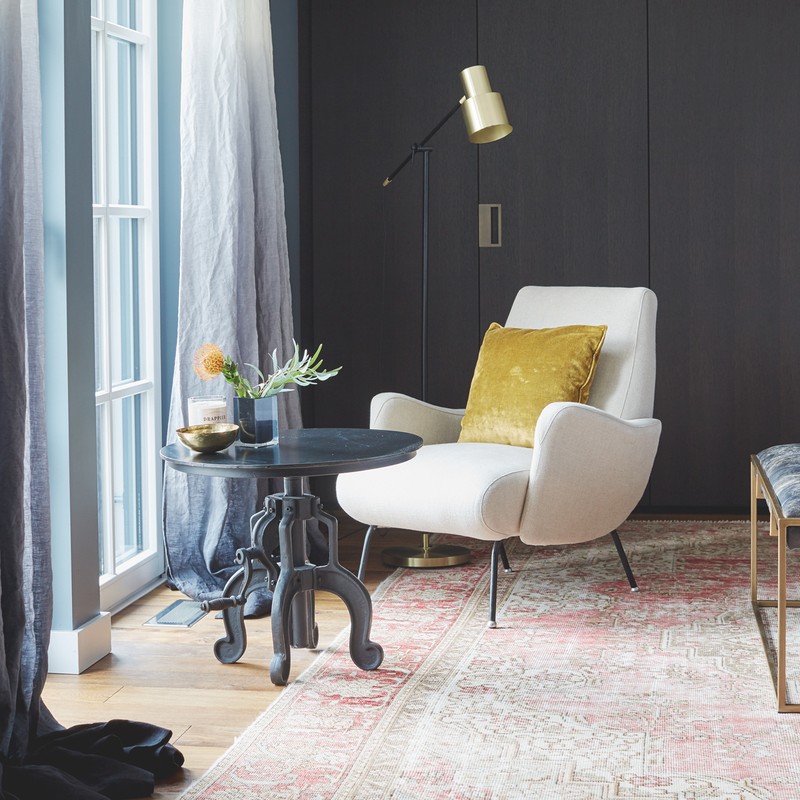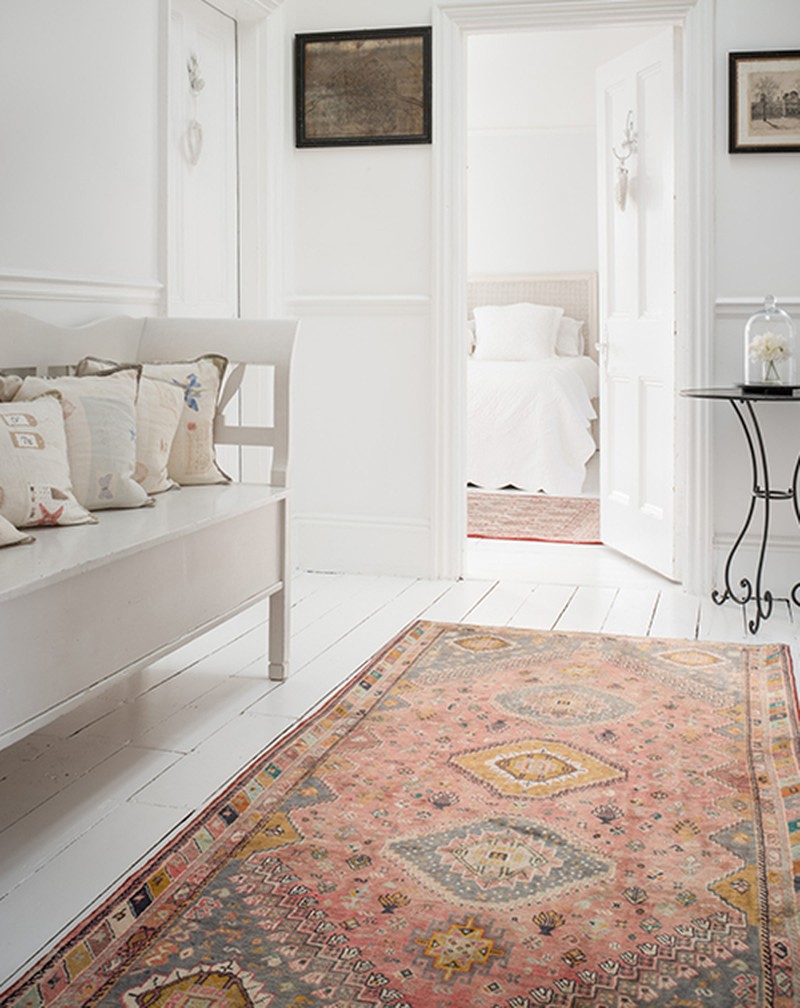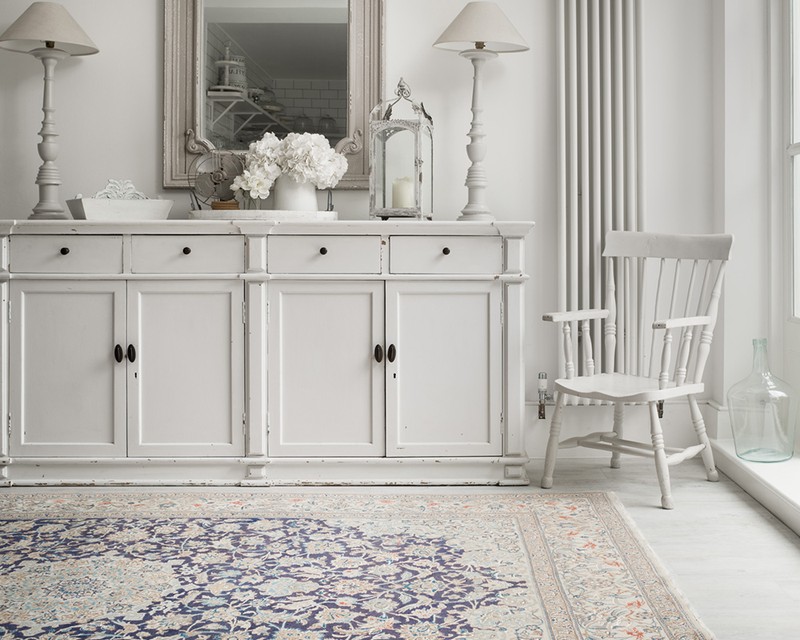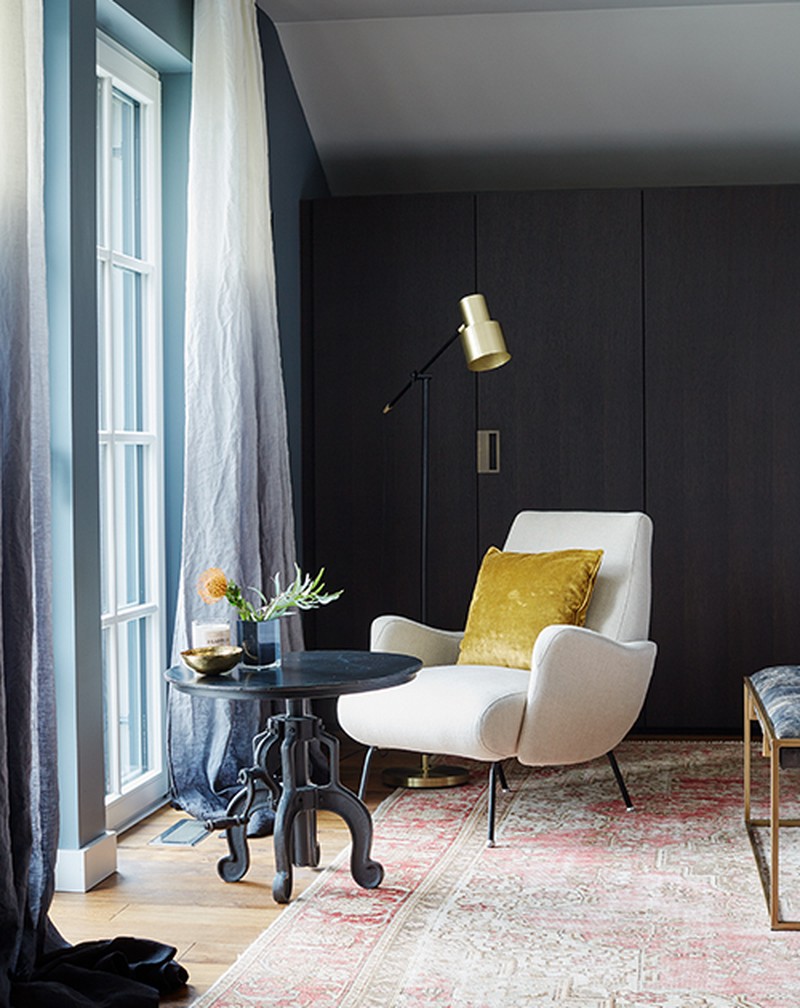How To Use Traditional Rugs In Your Home
Juxtaposing a traditional rug against modern, minimalistic decor creates a luxe designer look that feels very ‘now’. The best way to achieve this is to introduce a patterned rug – Persian ideally – while keeping the rest of the scheme clean and subtle. Just like antique furniture, the faded elegance of antique traditional rugs can help ground a scheme that features contemporary furnishings.
Impact
The rug should be the foundation of the room but not dominate the space. “To me, rugs are the subliminal element in any room,” says rug designer Luke Irwin. “You see them out of the corner of your eye and, as such, should be the last thing you notice. When you do, it should all make sense.”
Daniel Prendergast, design director at The Rug Seller, has this tip on creating impact with a rug: “Traditional doesn’t have to be old-fashioned. The key to a classic look in your interior space is to pick a timeless style which will enhance your room – it can be a traditional pattern or more antique finish – but make sure the modern styling is just that, to achieve contrast.”
Colour
“Traditional rugs bring in colour, which is paramount, and juxtapose shiny hard surfaces, especially stone and concrete floors, to give comfort, cosiness and warmth,” explain Sarah Vanrenen and Louisa Greville Williams, founders of Vanrenen GW Designs.
“We recommend when choosing a traditional rug for your room to try and tie in a colour that is used somewhere else in the scheme,” says Saskia Howard of Howark Design. “Even when a rug is contrasting in style, linking a colour – even if it’s just through accessories – will help the room feel more considered and harmonious.”
Position
“When styling a rug in a central space, such as a sitting room, the rug size is the most important consideration. The front legs of the furniture should sit upon the rug itself,” says Luke Irwin. “Always consider the footfall of a space. A room with high footfall is best suited to a heavier-weight weave which will not be kicked up, whereas modern space intended to be a haven for relaxation might benefit from softer patterns and textures that feel great under barefoot.”
Tiffany Duggan, founder of Studio Duggan, says: “We love to layer antique, faded Persian rugs on fitted sisal carpets to create a warm and layered look. It is also an excellent way of zoning areas within larger rooms to ensure the space feels grounded.”
Shape & Size
“In spacious modern rooms, note that a rug will be seen from many different angles,” says Luke. “Think circles and octagons to create an inclusive ambience – there is no need to be confined to square or rectangle shapes.”
“As with all rugs, pay close attention to the dimensions,” warns Saskia Howard. “A rug that is too small will make a space feel smaller and unbalanced; a rug that is too large can get in the way of door swings and be impractical. Even if you’ve fallen in love with the design, if it’s the wrong size it won’t work.”
Weave
“Classical berbers, vintage dhurries, Turkish kilims and antique herat carpets are the styles of rugs we use because of the softer, aged feel they have,” says Sarah Vanrenen. “They are all made from natural fibres, mainly wool, in beautiful natural colours and the texture of the weaves adds interest to a space.”
Saskia says: “Vintage Swedish flat weaves are a favourite of ours. They come in a huge range of colours and patterns that often sit well in a contemporary setting. Traditional rugs, such as flokatis and berbers, are having quite a resurgence. These work so well in a modern setting without looking too vintage, adding texture and warmth.”
Style & Pattern
Mixing contrasting materials harmoniously in the room, such as modern concrete walls and authentic, traditionally woven rugs, is a great combination. “Very often the Moroccan and Turkish berbers and kilims are made with irregular geometric patterns, which tones down the harder, more clinical lines in modern surroundings,” says Sarah.
“Smaller and compressed modern spaces benefit from traditional rugs with patterns that frequently relate, such as a classic stripe print,” advises Luke.
Upkeep
“Traditionally constructed wool rugs are far easier to clean, maintain and last much longer than modern rugs made with synthetic fibres,” says Saskia. “They age beautifully and are something that can even be handed down generations.”
To care for your rug, rotate it regularly to avoid patchy fading from exposure to sunlight and uneven wear and tear. Spot clean as soon as a spill happens, but do not use bleach or harsh cleaning agents. Padding under a rug helps protect its shape and reduce wrinkling. Finally, air your rug – hang it outside every four to six months.
Where To Buy
TheRugSeller.co.uk
LondonPersianRugCompany.co.uk
FrancesLoom.com
Vinterior.co
FarnhamAntiqueCarpets.com
RugVista.com
Benuta.co.uk
Etsy.com
DISCLAIMER: We endeavour to always credit the correct original source of every image we use. If you think a credit may be incorrect, please contact us at info@sheerluxe.com.





